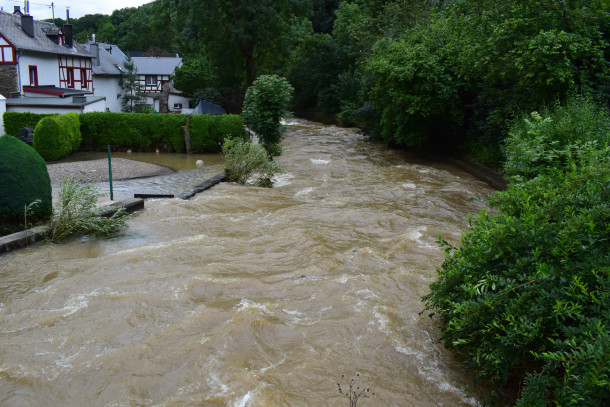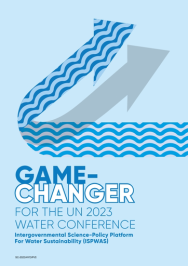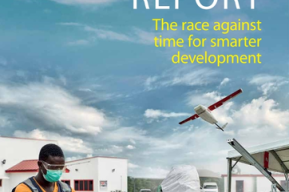Idea
UNESCO proposing a global assessment that could be a game-changer for reaching world’s water goals


To achieve this, UNESCO is proposing a game-changer idea: the regular production of a scientific assessment of the world’s water resources that would gradually erase the blind spots in our understanding of the water cycle while offering Member States and water actors a much broader palette of solutions for achieving sound water management. A range of future-oriented scenarios would enable stakeholders to analyse the likely consequences of different development paths. Each science-driven assessment would be validated by an intergovernmental mechanism, thereby helping to close the science–policy gap. This idea will be discussed at the United Nations Conference on Water from 22 to 24 March.
In most parts of the world, institutional water management remains severely fragmented. Public bodies work in silos and are often underfunded and understaffed. As a result, there is little or no coordination between institutions within and across sectors, such as those responsible for providing customers with clean water and sanitation and those responsible for managing water in industry and agriculture, not to mention hydropower, nuclear power, environmental protection and disaster risk reduction.
Fragmented water management at institutional levels can have dire consequences. When the US city of New Orleans was struck by Hurricane Katrina in 2005, the severity of flooding was exacerbated by land subsidence. This subsidence had been caused by factors that included localized oil drilling and groundwater pumping, as well as a drop in sediment deposits since the construction of dams along the Colorado River. These dams had been built to ensure a stable supply of water for crop and dairy farming across multiple states; today, they account for about 80% of water drawn from the river. However, these dams are operating in a changing climate. Less water is flowing into the Colorado River, as the West Coast enters its third decade of a megadrought that could be the most severe in this region for 1,200 years.
Urban planning needs to take flood risk into account and invest in disaster prevention. For instance, ‘sponge cities can help to reduce the vulnerability of settlements to heavy rainfall by alternating densely built-up areas with woodland, agricultural land and other open, green areas that can absorb some of the excess water. Of course, the most effective way to avoid losses is to keep flood-prone areas free from construction. Unfortunately, pressure from locals and developers, combined with weak legal restrictions, led to massive flooding of homes, factories and other built structures in the floodplain during the devastating 2021 flood in Western Germany.
The question is: how can we reduce our vulnerability to climate-related disasters when there remain such yawning gaps in our data, and thus in our knowledge, of the water cycle and water-related issues? We are missing a comprehensive diagnosis of the water-related issues affecting multiple sectors that are impeding our progress towards the Sustainable Development Goals adopted by the United Nations in 2015. The science-based global water assessment would provide this diagnosis.
The idea for a science-based global water assessment has been developed by UNESCO’s Intergovernmental Hydrological Programme, in collaboration with Future Earth's Sustainable Water Future Programme. Other United Nations agencies have provided feedback, including the World Meteorological Organization, the International Atomic Energy Agency, the United Nations Development Programme, the United Nations Environment Programme and the Secretariat of the United Nations Convention to Combat Desertification. The scientific community has contributed to this brainstorming through the International Science Council and International Association of Hydrological Sciences, among other academic and research institutes.
Two main novel features
The United Nations and other bodies produce a range of regular global reports on environmental issues. UNESCO’s World Water Assessment Programme itself produces an annual report on different themes on behalf of more than 30 UN agencies known collectively as UN-Water – but none of these reports takes the form of a data-based, solution-oriented assessment underpinned by science. The proposed assessment would, thus, represent a clear shift in emphasis.
The second novelty is that this would be the first global scientific assessment of water resources to be validated by an intergovernmental mechanism. Such a mechanism would bridge the current science–policy gap. This approach has already proved its worth for the reports by the Intergovernmental Panel on Climate Change (IPCC) and the Intergovernmental Science–Policy Platform for Biodiversity and Ecosystem Services (IPBES). Currently, there is no mechanism that allows Member States to agree on science-based evidence for decision-making in water-related matters. The new global assessment of water resources would remedy this by giving Member States buy-in into the difficult decisions that we shall have to make in the years to come to ensure that our planet can continue to support us.
The upcoming UN 2023 Water Conference taking place in New York from 22 to 24 March – the first of its kind in 46 years – will provide a unique opportunity to discuss the viability of a scientific assessment for water and chart the road ahead. The conference will open a window of opportunity for Member States to influence the science-based global water assessment and take ownership of it.
What would the assessment cover?
The idea of a scientific assessment of global water resources will be discussed at the UN 2023 Water Conference in March but the basic idea is that a designated national entity in each country would undertake a scientific assessment of domestic water resources. Once all of these national assessments were complete, an appropriate intergovernmental mechanism would validate the complete report.
The assessment would cover the full water cycle, including surface water, groundwater, atmospheric water, recycled water and other unconventional water sources.
The assessment would examine water availability, water use, water quality and societal and environmental needs; it would integrate the effects not only of hydrology but also of ecology, hydraulics, chemistry, engineering, human health, culture, climate change and socio-economic behaviour. Digital tools, including Earth observation, other forms of remote sensing and artificial intelligence would be used extensively to identify patterns in all water-related processes.
The assessment would identify state-of-the-art solutions capable of providing policymakers with a more comprehensive understanding of the options available to them to tackle water-related challenges.
The assessment would identify gaps in implementation of the Sustainable Development Goals and policy needs from the global to the regional levels, with the option of downscaling to the local level. It would also identify investment gaps and opportunities, as well as when and where to invest in order to accelerate progress towards the SDGs.
The assessment would be supported by a backbone of cutting-edge research facilitated by multiple interconnected research hubs. Research centres with a limited capacity to produce solution-oriented assessments would be linked to centres of excellence to address North–South asymmetries.
Last but not least, the assessment would take an all-inclusive approach aligned with national and regional priorities and circumstances by incorporating open science, citizen science, women and youth-led initiatives, as well as traditional and indigenous knowledge.








